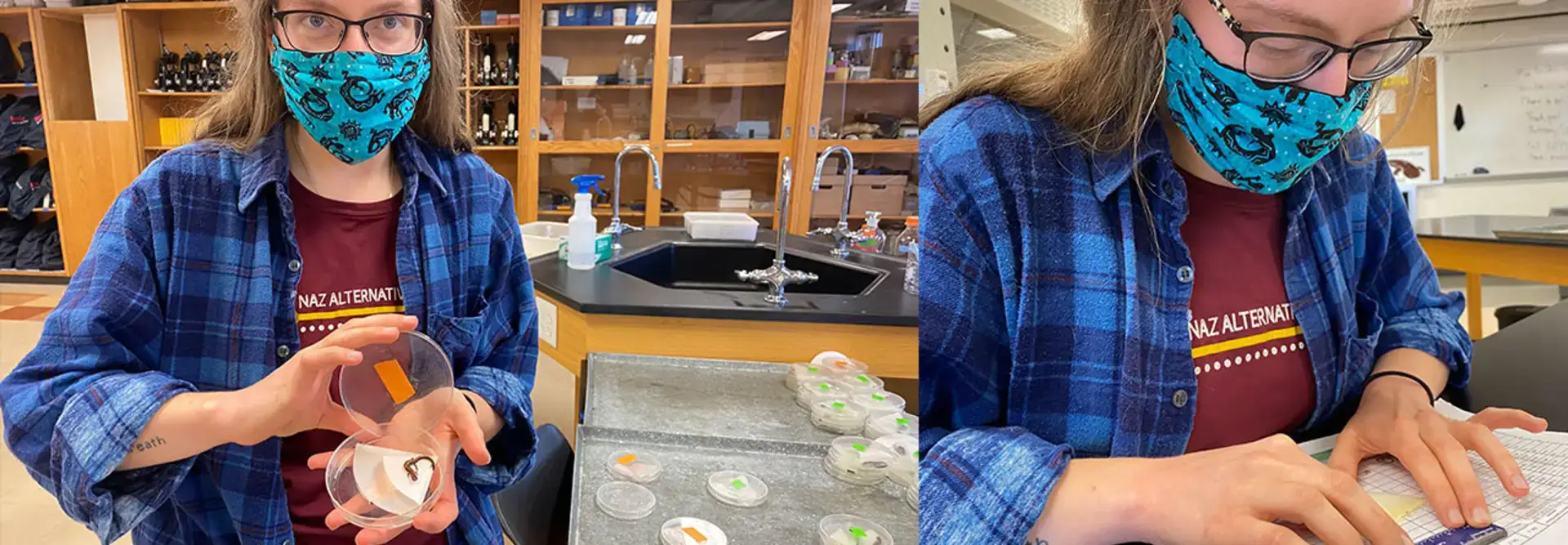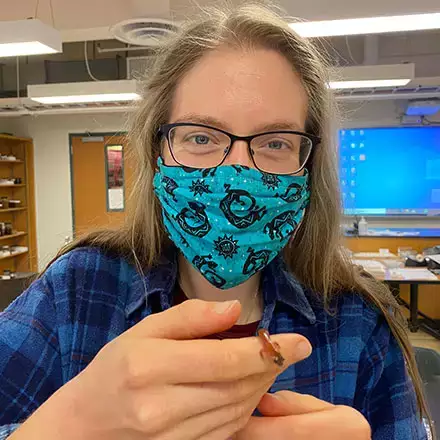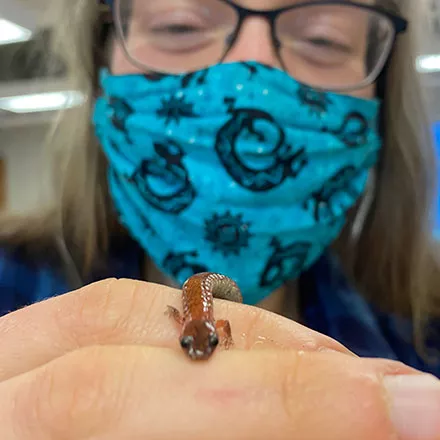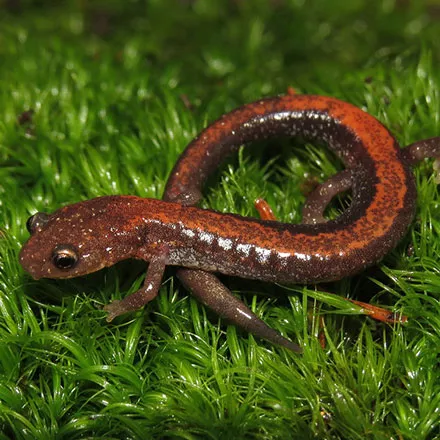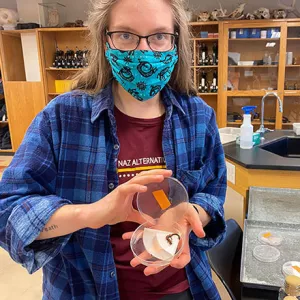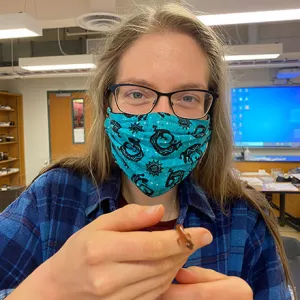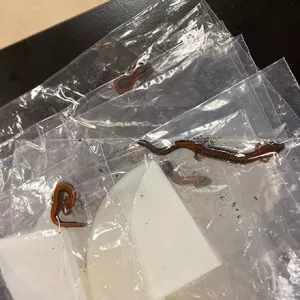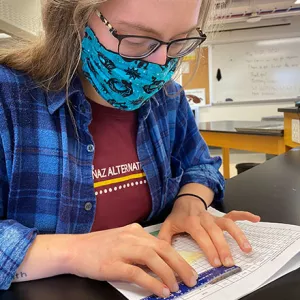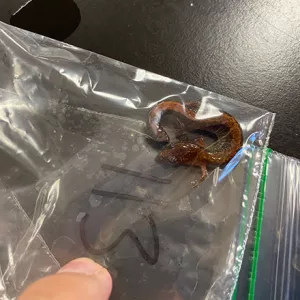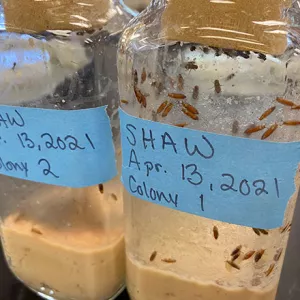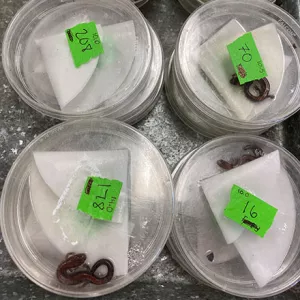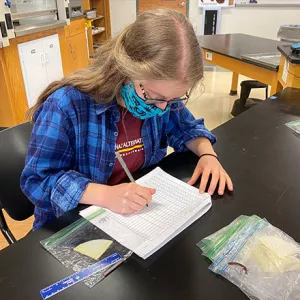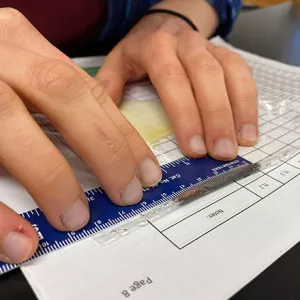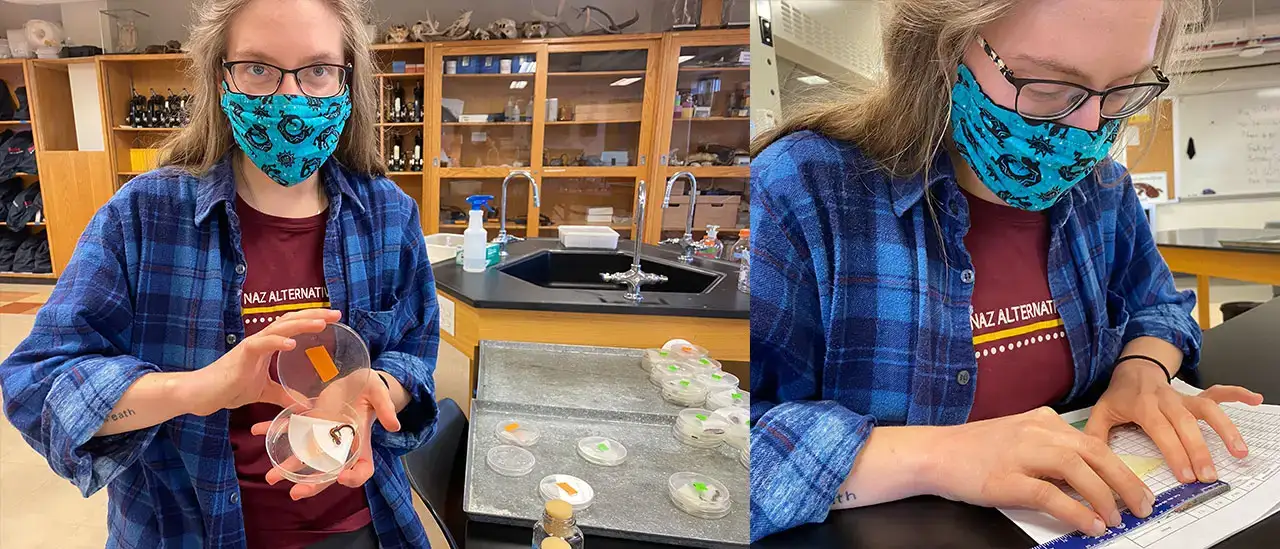A year ago, Bainbridge, NY, native Bethany Shaw wasn’t particularly invested in the red-backed salamander, a small, hardy woodland creature whose scientific name is Plethodon cinereus. Today, she is the attentive caretaker of 120 of the tiny, reddish brown salamanders, and she even has a favorite.
On a recent day inside one of the laboratories in SUNY Oneonta’s Perna Science Building, Shaw – a first-year graduate student earning her master’s in biology at the college – wore a cloth face mask covered in a swirling lizard design and spoke about her newfound passion for the salamander, the focus of her graduate research. Early May is the perfect time to study them, she explained, because the salamanders are out on the surface now but, come summer, will go dormant and bury themselves in the ground.
When Shaw began her graduate studies, she knew she was interested in ecology and physiology but wasn’t sure what she wanted the focus of her research to be. Her faculty adviser, Dr. Elizabeth Bastiaans, mentioned the red-backed salamander, and Shaw’s interest was piqued, particularly because their skin is permeable to their environment since it is through their skin these salamanders breathe. But it was another specific, fascinating talent of the salamander’s that Shaw ultimately decided to study.
“These little guys are particularly cool because they can detach their own tails to escape predators, which is called autotomy, and then they can regenerate them!” she explained. “They have these sections of their tails (called septa), and they can sort of squeeze them off when their tail is pinched, tricking the predator into thinking they’re dead when in reality they’re perfectly fine and can then escape and regrow their tail.”
The Hunt for the Red-Backed Salamander
Beginning April 12, Shaw began visiting SUNY Oneonta’s College Camp nearly every day to search for salamanders to research, specifically looking at tail regeneration and how that can be influenced based on difference in energy stores. With some help from undergraduate students, she collected 240 salamanders, making sure to put back any gravid females, any with a short tail, or any that were “too small.”
“It was a learning curve at first, figuring out the best days to find them and how to best take care of them,” Shaw said with a laugh. “We discovered that any day in the 50s or 60s is perfect to find them, especially the day after it rains. They’re temperature-sensitive, so I had to find a lab that was cold enough for them to survive, and I learned that the hard way.”
Every day, Shaw comes to the lab to check on and care for her salamanders and conduct up to 13 hours of research. She feeds them fruit flies and takes their mass using a small scale, which they sometimes squirm off of, hiding underneath.
“They have little personalities,” Shaw said. “I actually have a favorite, No. 120. It just looks really cool.”
Asking the Big “Why?” Questions
Shaw is no stranger to SUNY Oneonta’s Department of Biology. After she graduated from high school, she landed an internship at the college’s Biological Field Station in Cooperstown, where she conducted her own research. That’s where she first fell in love with ecology.
She then attended Nazareth College in Rochester, where she earned bachelor’s degrees in toxicology and biology. At Oneonta, she has been a Teaching Assistant for two biology lab courses and, after getting her Ph.D., wants to teach at a collegiate level.
“I think that being a professor would use my gifts and talents well,” she said. “I enjoy asking the big ‘why?’ questions and finding the answers. It excites me.”
Shaw says Oneonta’s M.S. Biology program has suited her needs and is helping her grow as a researcher and person.
“I feel supported by various faculty members, which is nice,” she said. “And it’s just really exciting to be able to do my own research like this. I have a lot of freedom, which I think will really prepare me for my Ph.D.”
